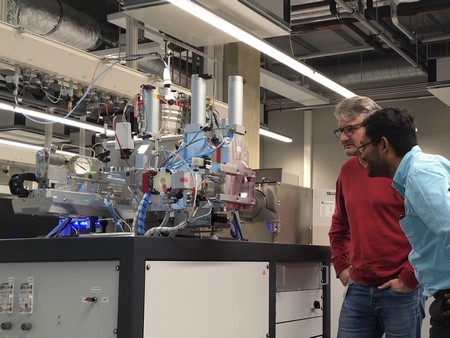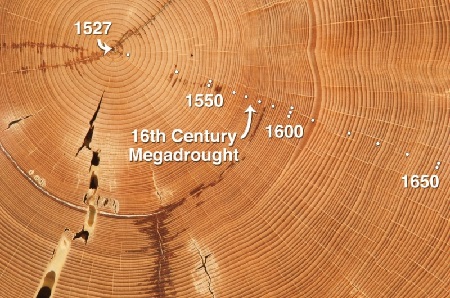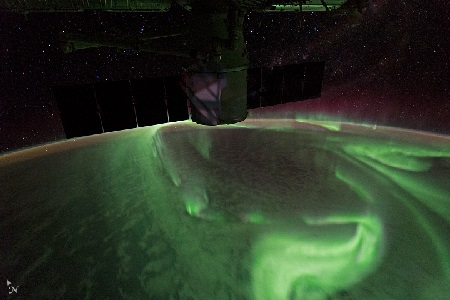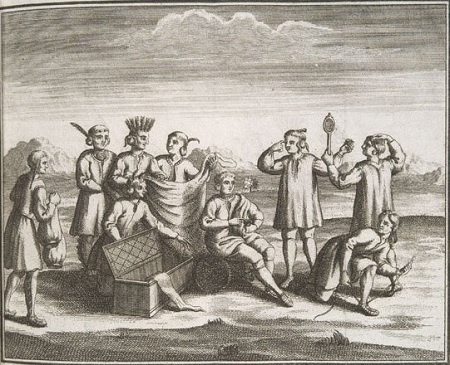Rewriting the past
Dating past events can be difficult. Archaeologists often rely on carbon-14 dating, which can be used on organic samples, but this technology usually gives a broad date range. Five years ago, a discovery was made that promises to change all that, at least in some cases. Global spikes in carbon concentration which occur sporadically may help us pinpoint historic events to a single year. Unfortunately, the cause of the spikes may also create chaos for our civilization.
Michael Dee is Assistant Professor of Isotope Chronology. He uses the carbon-14 method to date organic objects up to around 40,000 years of age. Dee joined the C14 lab at the University of Groningen Centre for Isotope Research (CIO) almost two years ago, bringing an ERC Starting Grant with him. He works primarily on techniques to improve the accuracy of carbon dating, such as Bayesian modelling, a mathematical method which allows the date range to be narrowed.

Dating
‘The result of carbon dating is not a date, but a date range’, Dee explains. In the upper atmosphere, cosmic particles hit gaseous atoms, causing them to release neutrons that in turn are captured by nitrogen and transformed into the radioactive carbon-14 isotope. Plants absorb carbon dioxide from the atmosphere. This carbon dioxide includes a tiny amount of carbon-14, so when the plant – or the animal that ate the plant – dies, the carbon uptake stops and the carbon-14 slowly decays. Every 5,730 years, half of the carbon-14 has gone. Therefore, the carbon-14 concentration tells you how old the object (animal, vegetable or even mineral) is.
However, production rates of carbon-14 in the atmosphere can change, says Dee. ‘Even so, we all believed that production was fairly constant. So when we made correction curves, we averaged over the course of a decade.’ That is, until Japanese scientist Professor Fusa Miyake analyzed individual tree rings and found a spectacular spike in carbon-14 content.
Tree-rings
Through tree-ring counting (dendrochronology), the spike was dated to the year 775 CE. At first, people were suspicious about this result. But when other labs went to their dendrochronology sample banks and pulled out the tree rings from around 775 CE, they found the same results in the US, Russia, New Zealand, the Netherlands and other places. ‘It was a global feature’, says Dee. ‘In that year, the amount of carbon-14 increased by around 1.2 percent, whereas the normal year-to-year variation is 0.1 or 0.2 percent.’ The increase in carbon-14 is seen in all plant material from that year, making it stand out in any analysis.

The beauty of this is that it gives scientists a fixed point, explains Dee: ‘If we find a wooden beam in a structure from the eighth century, and it contains a tree ring with this spike, we can count from there to the edge of the tree, so we know exactly when it was felled and the structure was built.’ After Miyake’s first discovery was confirmed, she found a second spike in 994 CE, and two more have since been discovered by other labs.
Pharaohs
These are exciting discoveries, explains Dee. More spikes could revolutionize our understanding of the past. ‘For example, we have 1000 years of daily records from the Mayan period, but no way of determining when exactly in calendar time these records started and ended.’ To do so, you would need to date just one year in these records with absolute certainty. A carbon-14 spike found somewhere in the dendrochronological records for this period could make it possible to pin down all Mayan history from Mayan wooden remains. ‘The same goes for other areas, like Egypt. We have papyri with detailed annual descriptions of the acts of Egyptian pharaohs, but there is quite a bit of uncertainty about when these pharaohs ruled. A spike found in any organic material associated with one of them might give us the exact year, from which we could reconstruct dates for an entire dynasty.’
In his ERC project, Dee is looking at this new opportunity from several angles. ‘A postdoc, a data scientist by training, is analyzing the raw data from the carbon dating of tree rings to find signs of undiscovered spikes. Another postdoc is looking at organic samples from historical sites to see if she can use the spikes that we have to date these exactly. And a PhD student is investigating what caused the sudden increase in carbon-14. This is where things become slightly worrying.’

Dee continues, ‘Whatever it was, it must have caused a huge increase in the number of cosmic particles striking the upper atmosphere. If such an event happened now, it would knock out all satellites, either damaging them or totally destroying their electronics. This would bring our society to a standstill. Furthermore, the electronic systems of airplanes cruising at high altitudes could also be affected.’ The good news is that we wouldn’t experience any direct effect on the Earth’s surface. ‘We would just see a great light show from the aurora, the northern lights, possibly all over the globe’, says Dee.
Light show
Something similar happened in 1859, when the aurora became visible as far south as Hawaii and the Caribbean. ‘This was the most powerful solar storm ever recorded. Yet we don’t see any effect in carbon-14 concentrations, so apparently even a storm like this isn’t strong enough to explain the spikes.’ Astrophysicists are therefore still debating what may have caused the spikes – even more extreme solar activity or some huge event somewhere in the Milky Way. ‘My PhD student is trying to correlate the known spikes with solar activity. If we understand what causes the spikes, we may be able to protect our satellites.’

This brings us back to the spikes. They will allow us to pinpoint the date of historical events to the exact calendar year rather than a couple of decades or more − but is this important? The answer lies in a paper co-authored by Dee that appeared in the journal Science Advances on 6 December. ‘We have dated charred maize and similar samples from Native American settlements near the Great Lakes’, he explains.
Settlers
Archaeologists studying societal changes in Iroquoian communities between the 11th and 17th century had noticed how small settlements coalesced into larger villages in the second half of the 15th century. This was before any influence from European settlers was noticeable. ‘In our paper, we show that the dating of these events using classical archaeological information, like the appearance of glass beads brought by the Europeans, is not accurate. We have shifted the changes in Iroquoian society some 50 years forward.’

Dee’s contribution to the paper was to measure a number of samples and analyze the results. Unfortunately, it was not possible to use a spike to date these interactions to the exact year, but this shift was still a radical rewrite of 16th century history and the effects of contact between Iroquoians and Europeans.
So looking for new spikes is important because it could change our interpretation of the past. Dee hopes that more will be uncovered in the near future. ‘You don’t want too many; otherwise it will be difficult to distinguish them. One every few hundred years would be ideal’, he says. Although that could mean that the next spike-inducing but satellite-frying event is just around the corner.
| Last modified: | 20 December 2018 12.36 p.m. |
More news
-
10 June 2024
Swarming around a skyscraper
Every two weeks, UG Makers puts the spotlight on a researcher who has created something tangible, ranging from homemade measuring equipment for academic research to small or larger products that can change our daily lives. That is how UG...
-
21 May 2024
Results of 2024 University elections
The votes have been counted and the results of the University elections are in!

